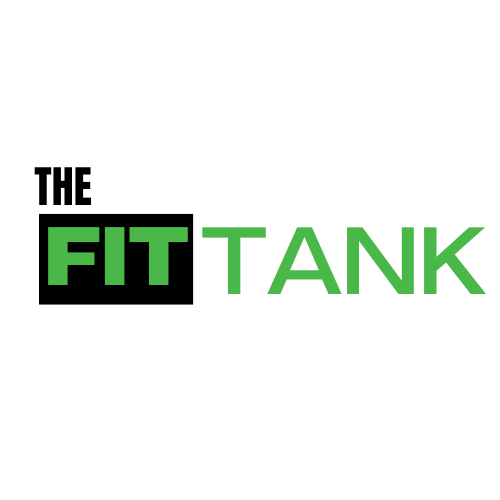Many of us yearn for a fast metabolism. You may have heard that healthy eating or exercising to stay in a certain heart rate zone will help raise it, while hormones play a role in whether your metabolism is fast or slow. But can we really control our metabolism or is that just wishful thinking?
Metabolism is not one process of the body but a series of processes that work together. Besides being a factor in weight, metabolism refers to the conversion of food into nutrients such as fatty acids or protein cells that your body uses for energy. And while the science lesson is nice, most people just want to know how metabolism can be used to improve their health and fitness goals.
Fortunately, you are in the right place. There are things you can do to improve your metabolism which can in turn improve digestion and even play a role in higher energy levels.
These are the 5 things you need to know about your metabolism and how to ensure it works in your favor.
1. Diet Induced Thermogenesis
Thermogenesis refers to the production of heat by our bodies, and diet induced thermogenesis refers to the extra expenditure of heat due to certain foods. Technically, it is measured by the increase of energy caloric expenditure above the basal, or resting, metabolic rate. Certain foods have the ability to burn more energy and improve metabolism. Some of these foods include green tea and spices like cayenne pepper. Other foods that have a high thermic effect include chili peppers, beans, legumes, and avocados. Many fitness enthusiasts also use foods that are known as “negative calorie foods” to rev up their metabolism, like apples, celery, radishes and lettuce.
2. Muscles Boost Resting Metabolism
Raising metabolism can be done by burning more calories all through the day, not just when you are working out. Since muscle burns more calories than fat, increasing your muscle mass is a sure way to keep your metabolism working hard. To accomplish this, include a strength or weight training workout two or three times each week, which can be accomplished with or without weights. For example, chest and arm muscles can be trained with dumb bells or by doing pushups. Train your leg muscles with barbell squats and if you don’t have a barbell, build muscle with jump squats. With time, building muscle boosts your resting metabolism so you burn calories more efficiently. To get the most effort from your strength training workout, use enough weight or force so that your last rep is difficult without causing injury.
3. Protein is Necessary for Faster Metabolism
If you really want a faster metabolism, be sure to include plenty of wholesome protein into your healthy eating plan. Protein not only helps you lose weight, but can contribute to fat loss and help control your appetite. In addition, studies show that incorporating a high protein diet during a weight loss program preserves muscle mass, especially when exercise is also used. Aim for getting about 30% of your daily calories from protein and be sure to spread protein consumption throughout your day. Choose only healthy sources like fresh eggs, grass fed meats, fish, and legumes like lentils or chickpeas. Not only will you boost your metabolism, but you will also have more energy throughout your day, too!
4. Improve Hormones for Healthy Metabolism
Hormones play a role in all of our body’s functions including metabolism. Overall, hormones must be in balance for the best health, and there are ways to help. Insulin is a hormone that the body uses to transfer glucose into the bloodstream. Unfortunately, insulin resistance is an all-to-common condition that results in high blood sugar. You can improve insulin sensitivity with regular exercise, healthy sleeping habits, omega-3 fatty acids and a diet of low glycemic foods like vegetables, legumes and fruits.
Leptin is a hormone that regulates appetite by sending messages to your brain that you are full. Sadly, leptin resistance is a common issue that can easily lead to overeating and a slower metabolism. While it’s not known what causes leptin resistance, some researchers believe that chronic internal inflammation and highly processed foods may play a role. To counter this, be sure to stick with healthy eating centered around whole foods and lean proteins. In addition, research shows that regular exercise is linked to decreased leptin levels, so be sure to include 20 – 30 minutes or exercise at least five days a week for best results. (1)
5. The Best Heart Rate Zone for Fat Metabolism
Burning calories is one thing, but burning fat is ideal for most of us. It is well known that eating too few calories can lead to muscle loss, which can contribute to a poor muscle to fat ratio and a less than lean look. But what if you could burn fat while preserving muscle? The good news is that you can!
Heart rate zones are used to take advantage of how your body metabolizes energy. Knowing your heart rate zone while exercising can be a guide to understanding what energy source your body is using. For example, higher heart rates cause your body to use glycogen from carbohydrates while at lower heart rates help your body burn more fat as fuel.
The general breakdown is as follows:
· Aerobic zone is when you are exercising at 75% of your maximum heart rate and approximately 45% of calories are utilized from fat.
· The temperate zone is about 60% to 70% of your maximum heart rate and you will burn roughly 65% of calories from fat.
· Low-intensity heart rate zone is when you exercise at 50-60% of your maximum heart rate and about 85% of the calories burnt are from fat.
One easy way to use this is to incorporate resistance or strength training at least twice or more each week to improve muscle mass. This type of exercise generally puts you in the best heart rate zone to burn fat, and overtime as you improve muscle mass your metabolism will naturally improve.
References:



